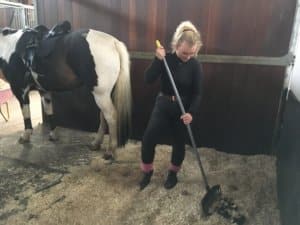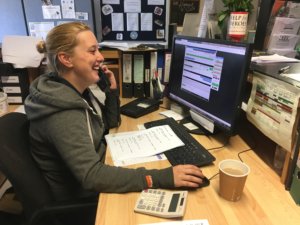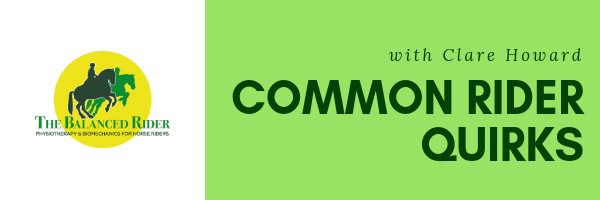The Balanced Rider
Common Rider Quirks with Clare Howard
Hi Clare here, for October I thought we would take a little look at our quirks……………
A common reason people come to see us is that they think there is something wrong with their body that is stopping them ride well. Whether this is a stiff hip, a bad back or an old shoulder injury or that their instructor has noticed they appear to sit unlevel or wonky when they ride. We inevitably end up discussing our rider anatomy and biomechanics which are relevant to riding. Biomechanics is quite fashionable at the moment but it is just a word used to describe how we use our anatomy when we move.
We all have different movement patterns, some are common patterns that most people have but some are unique to each of us. Some are useful for riding and some can hinder what we are aiming to achieve. But I never tend to think of them as faults, rather they are our idiosyncrasies. Embrace the ones which are useful, improve on the ones that can be adjusted and learn to accept and work around the ones which can’t be changed.
But how does this affect the horse? The only problem with some of these idiosyncrasies is that they mean we move differently on one side of our body compared to the other – the technical word is asymmetrical. For the horse this means we will be giving a different aid for each gait differently on one side compared to the other.
For example: if we have a stiff right hip, then the likelihood is that when we put our leg behind the girth it won’t go back as far on the right compared to the left. So for instance the aid for canter will be slightly different on the left compared to the right. Largely speaking our horse’s are very generous and get used to the difference. The problem lies when we blame the horse for not understanding our aids, or as we travel up through the levels the aids become more complicated and our horses just don’t understand.
The good thing to know is that these rider quirks are easy to start to improve. Especially for us amateur riders, because what we do for the 23hrs a day we are not riding, will directly affect how we sit for the hour we ride each day. If you sit slumped in an office chair eight hours a day, followed by rushing around after the kids and finally collapsing into the sofa, we are not going to miraculously sit like Charlotte Dujardin for the hour we ride our horse.
But with simple changes to our working day we can iron out some of these issues. Over the next few months we are going to look at all sorts of common rider problems and their easy solutions. The first thing to look at is our symmetry.
Your challenge for this month is to do slightly more activities with your non-dominant hand ie if you’re right handed, I would like you to do slightly more with your left hand. Just easy things like opening the car door, picking up a magazine from the floor. How about the same with your feet? If your right handed you probably lead with your right foot as you go up the stairs, can you lead with the other foot instead?
This might sound too simple and easy to be useful, but think about it like this……………
If you get frustrated when you can’t pick up a glass of water with the other hand, how does your horse feel when your aid for canter is different one side compared to the other, and you give him a tap of the whip for not responding – no wonder some horses kick out they’re just frustrated.
Happy symmetry x

<Right handed Gaby mucking out the first poo of each stable with the fork on the opposite diagonal- just the first poo otherwise you might get frustrated with the slower progress and give up completely.

>Charlotte is right handed and has moved easy to use equipment, her telephone to her left side, leaving only the challenging items like the mouse on her right.


